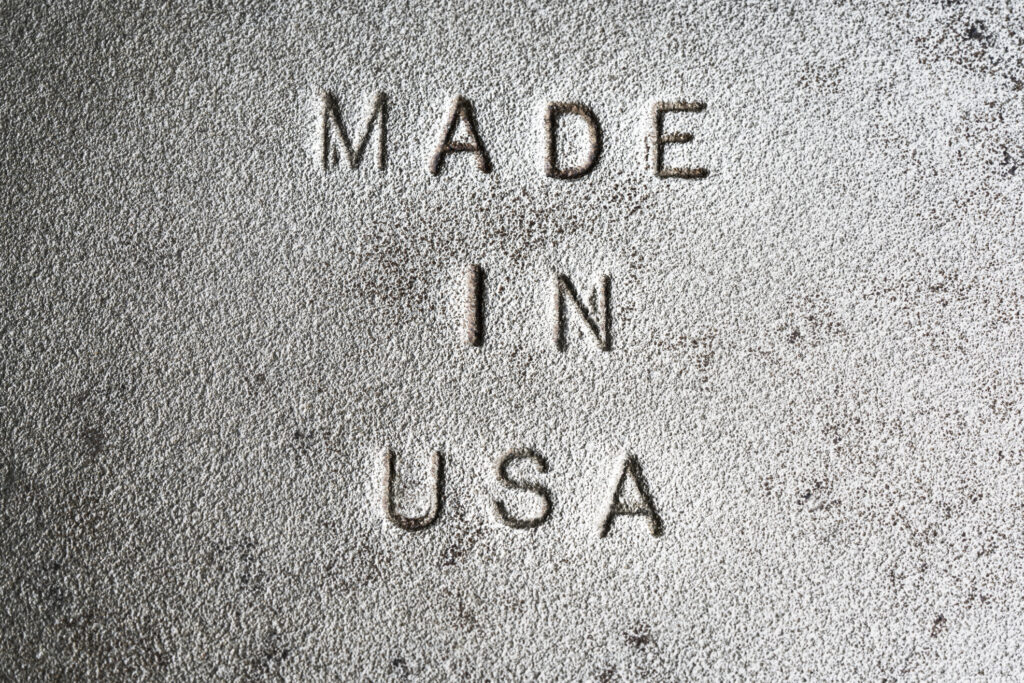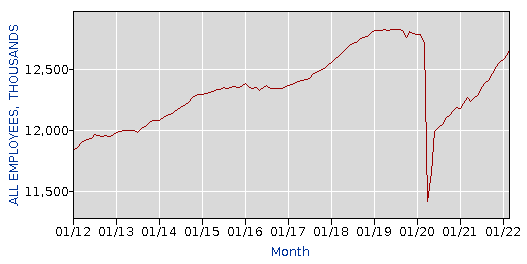
American factory employment is nearly back to its pre-pandemic level.
Last Friday brought us the March 2022 jobs report from the Bureau of Labor Statistics, and while we didn’t make a big deal out of it, it was a low-key pleasant development for the health of American economy: The U.S. manufacturing sector added another 38,000 jobs out of a total 431,000 created.
That’s more slow, steady and incremental progress for jobs in the U.S. factories since March 2020 and the onset of the COVID-19 pandemic – when manufacturing employment quite literally fell off a cliff and 1.3 million jobs were eliminated. It’s nearly back, in fact, to pre-pandemic levels.

IndustryWeek noted that the Institute for Supply Management’s PMI index, a monthly survey gauging the optimism of supply managers, retreated a little last week, which suggests the manufacturing sector’s rebound from the coronavirus hit it took is beginning to slow. But any score above 50% on the index still suggests growth. And the latest score is 57.1%.
So what’s been driving this growth? Has it simply been the economy snapping back to its previous form, after everybody closed up shop and hoarded hand sanitizer for a few months? Perhaps. but the federal government putting $1.2 trillion into American-made infrastructure last year certainly helped, as has the steady cheerleading for domestic manufacturing that has come out of the White House. Snapback or not, the American economy created nearly 400,000 factory jobs in 2021. That’s far and away more created than during any year of the Donald Trump presidency, and it’s more than in any year of the Barack Obama presidency. And you’ll recall that President Obama during his re-election campaign talked a lot about creating 1 million new manufacturing jobs during his second term.
You know why we like factory jobs: Their presence means industrial activity stateside, which means more industrial innovation taking place here, stronger local economies and tax bases, and good wages paid to Americans without four-year degrees. Simply put, you can make better money as a welder than in retail.
Here’s what Alliance for American Manufacturing President Scott Paul had to say about the latest numbers:
Factory job growth has been a real bright spot in this economy.
“A healthy 38,000 manufacturing jobs were added in March, continuing a good run in which we’ve gained 389,000 factory jobs over the past 12 months. There’s good reason to believe this boom can be sustained, as the JOLTS report showed 808,000 openings in manufacturing in February.
“Some of this future growth will depend upon the policy and regulatory environment. That’s why it is so important for Congress to get jobs, competitiveness, and innovation legislation over the finish line. We’re calling on lawmakers to finish their work swiftly, and to do so in a way that strengthens our trade enforcement mechanisms.
